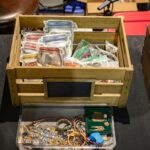Table of Contents
Ever opened your pantry and had something fall on your head? Or bought pasta only to find three unopened boxes hiding behind the cereal? A well-organized pantry helps you avoid this.
The real trick is creating a system so simple that it keeps working with minimal effort. Here’s how to organize a pantry that practically runs itself using 7 strategies.
1. Start with a Clean Slate
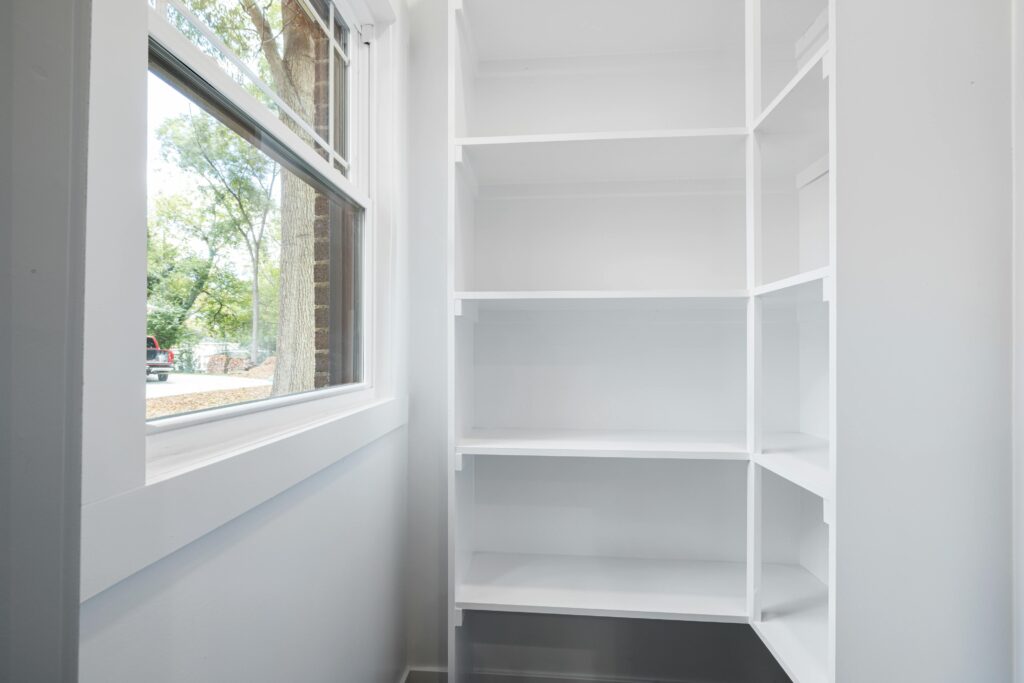
Before you can organize, you need to clear everything out. Choose a weekend when you have a few hours to spare. You need to see what you’re working with.
Empty everything from your pantry. Everything. Check expiration dates as you go and toss anything that’s expired or that you know your family won’t eat. Be honest with yourself about those fancy ingredients you bought for that one recipe three years ago.
Wipe down all shelves and walls. You’d be surprised how much dust and food debris collects over time. This is also your chance to add a shelf liner if you want. It makes future cleanups much easier.
2. Zone Planning
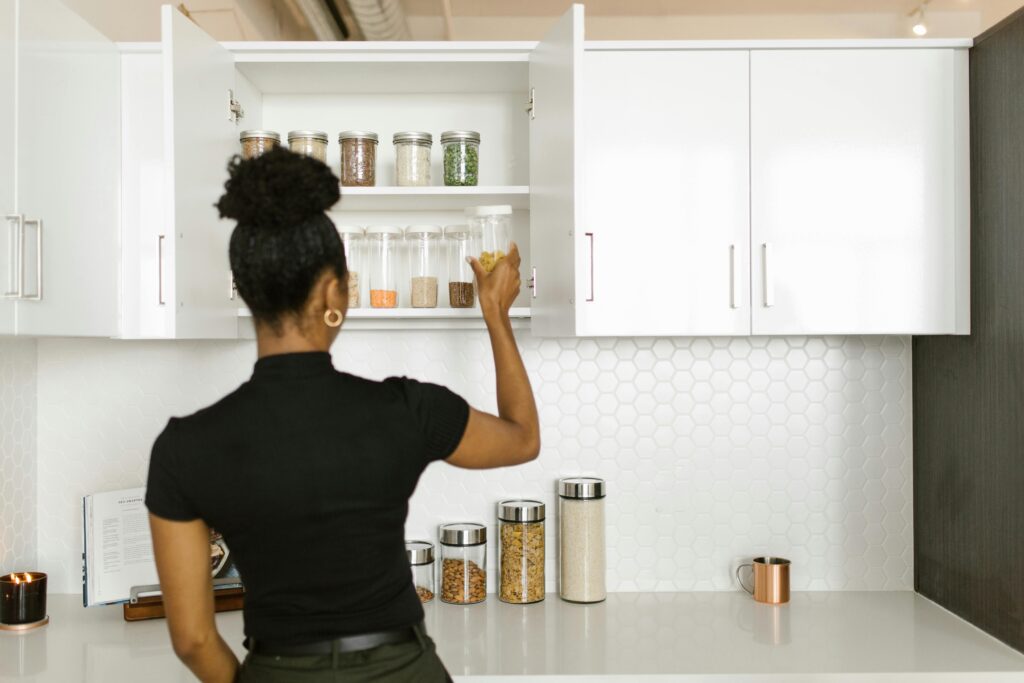
The key to a pantry that stays organized is creating intuitive zones that make sense to everyone in your household.
Think about how your family uses food and create zones accordingly:
Everyday Items Zone
Place items your family uses daily at eye level. This may include:
- Breakfast foods (cereal, oatmeal)
- Snacks
- Bread
- Commonly used condiments
When the most-used items are easily accessible, there’s less chance of messing up other areas of the pantry during daily use.
Cooking Zone
Group all cooking staples together:
- Pasta and rice
- Canned goods
- Oils and vinegar
- Spices and seasonings
- Baking supplies
Having these items together means less searching when preparing meals, which also means less disorganization.
Kids Zone
If you have children, create a special zone just for them at their height:
- Approved snacks
- Juice boxes
- Lunch-packing supplies
When kids can help themselves without climbing or asking for help, they’re less likely to mess up your entire system.
Backup Supply Zone
Use higher or lower shelves for:
- Extra pasta, rice, and canned goods
- Bulk items
- Seasonal items
This keeps your main zones uncluttered while still having backups ready.
3. Container Strategy
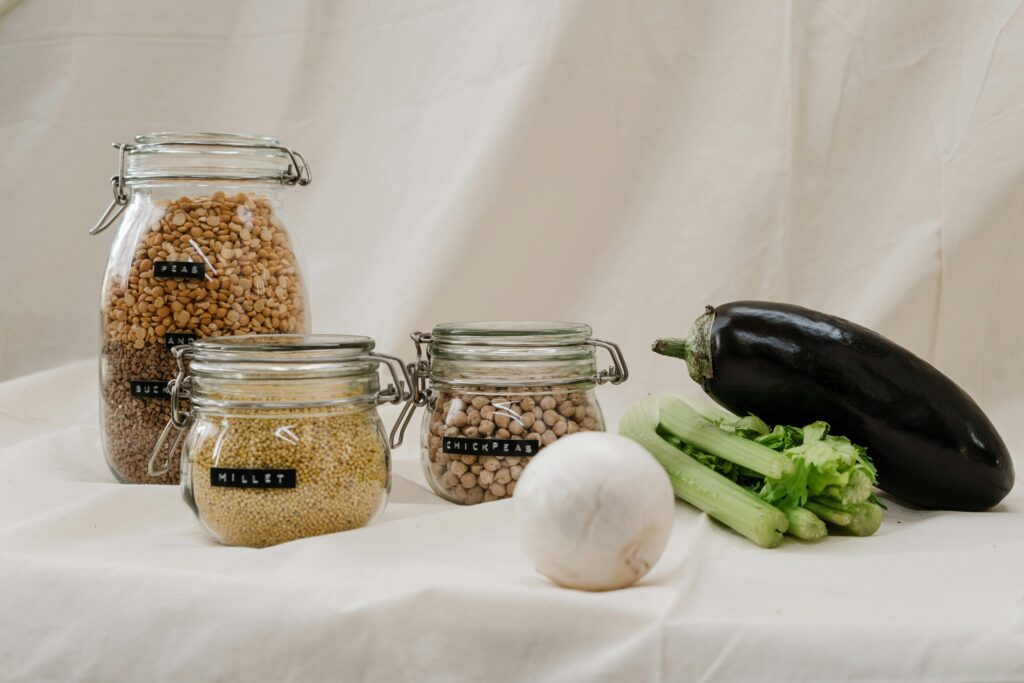
The right containers make all the difference between a pantry that falls apart in a week and one that maintains itself.
Clear Containers Are Non-Negotiable
Fancy matching containers are just for show, they’re actually functional. Clear containers let you:
- See when supplies are running low
- Prevent pest problems
- Keep foods fresher longer
- Standardize your space
You don’t need to buy everything at once. Start with containers for your most-used items like flour, sugar, cereal, and snacks, then add more over time.
The Decanting Rule
Commit to a simple rule: if it comes in a flimsy bag or awkward box, decant it. This includes:
- Flour, sugar, and other baking staples
- Rice, pasta, and grains
- Snack foods like pretzels or crackers
- Cereal
The five minutes it takes to transfer groceries to containers saves hours of reorganizing later.
Label Everything (Even the Obvious)
Labels aren’t just for you. They’re for everyone in your household. They silently instruct where things belong.
Use a label maker or waterproof labels to mark:
- Container contents
- Expiration dates for bulk items
- Zone names on shelves
This creates a self-explanatory system where items naturally find their way back to their proper place.
4. The Rotation Method

One of the biggest challenges in maintaining a pantry is using older items before they expire. The rotation method solves this.
When unpacking groceries:
- Place newer items behind older ones
- For stackable items like canned goods, place newer items on the bottom
- If using deep containers, place older items toward the front
This simple habit prevents food waste and saves money over time.
5. Family Training

The most beautifully organized pantry will fall apart if you’re the only one who knows how to maintain it.
The 30-Second Tour
Give your family a quick tour of your new system. Show them:
- Where their favorite items now live
- How the zones work
- The basic rules (like returning items to their containers)
Keep it simple. The easier your system is to understand, the more likely everyone will follow it.
The One-Touch Rule
Introduce the one-touch rule: items should only be handled once when returning them to the pantry. This means:
- No setting a box down “for now”
- No shoving items on any available shelf
- Everything goes directly back to its designated home
This single habit prevents 90% of pantry disorganization.
6. Inventory Management
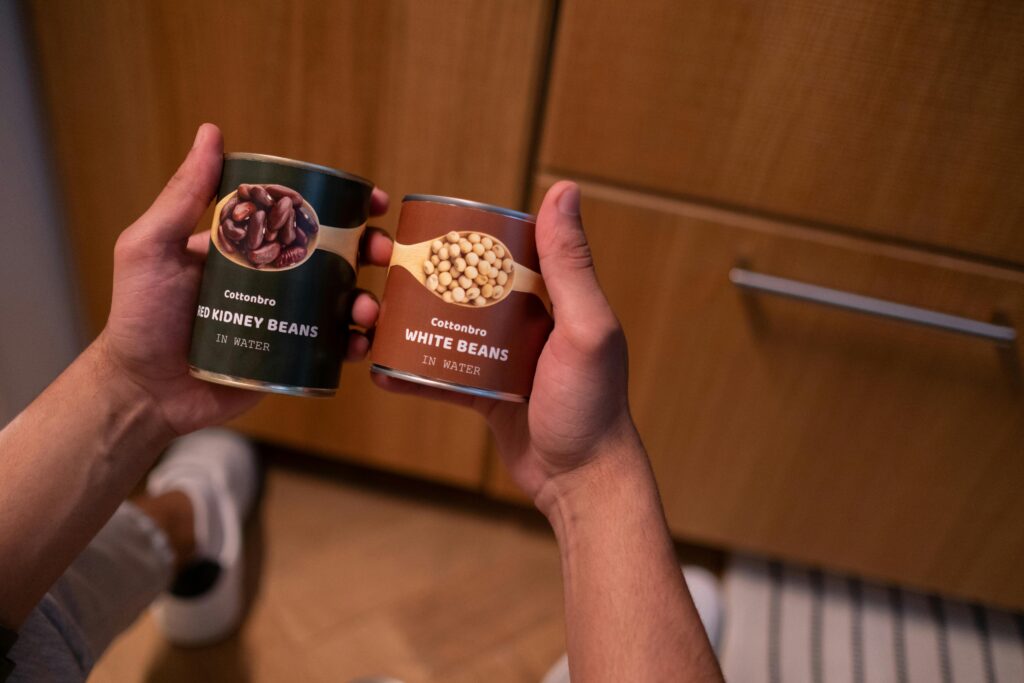
A truly self-running pantry includes a system for keeping track of what you have and what you need.
The Running Shopping List
Mount a small whiteboard or notepad inside your pantry door. When someone takes the last (or nearly the last) of something, they write it down immediately.
Make this easy by:
- Keeping a pen or marker attached to the board
- Having a clear “minimum stock” visual (like a line drawn on containers)
- Checking the list before making your shopping plan
This prevents the “I thought we had that” moment that leads to disorganized last-minute shopping.
The Weekly Scan
Take 5 minutes once a week to scan your pantry. Look for:
- Items running low
- Anything that needs to be used soon
- Containers that need cleaning
This quick check prevents problems before they start and keeps your system running smoothly.
7. Seasonal Refreshes
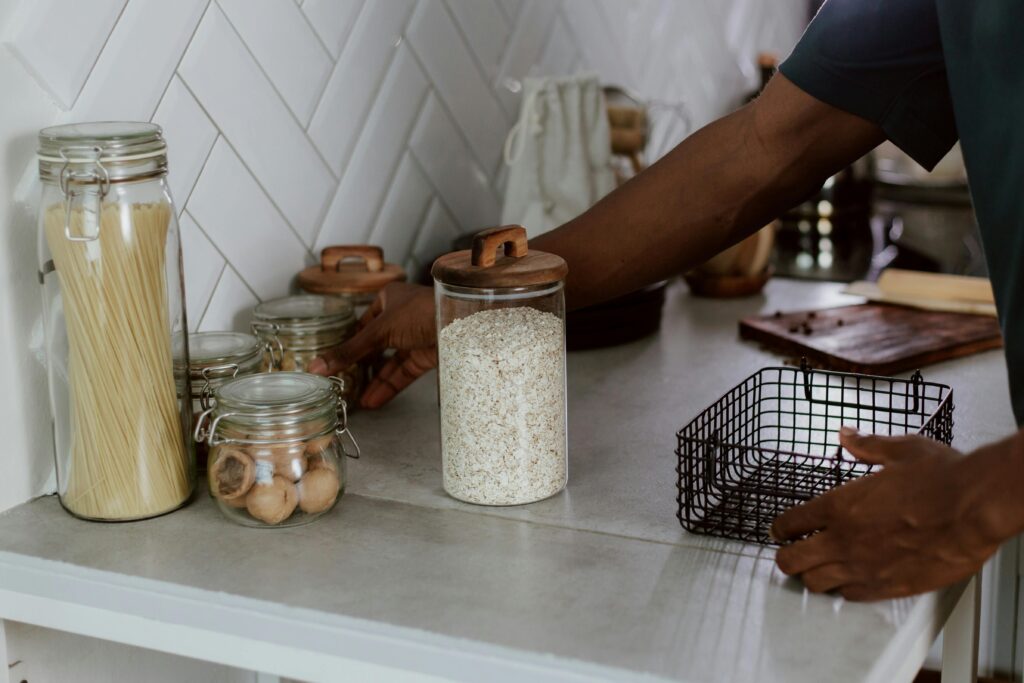
Even the best system needs occasional maintenance. Schedule a quarterly refresh much simpler than your initial organization:
1. Remove and check any items that have been sitting untouched
2. Wipe down any sticky containers or shelves
3. Reassess your zones and make adjustments based on changing family needs
4;. Update any labels that have worn off.
This quarterly tune-up keeps your pantry system from breaking down and takes much less time than starting from scratch.
Reaping the Rewards
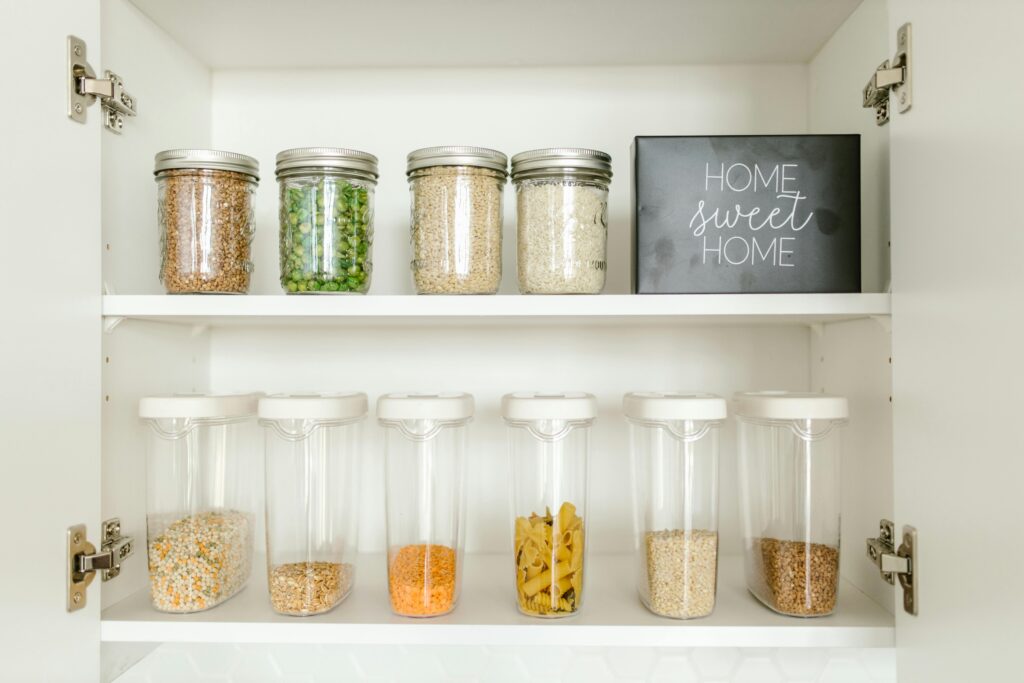
A pantry that maintains itself gives you more than just tidy shelves. You’ll notice:
- Less food waste as you actually use what you buy
- Lower grocery bills by not buying duplicates
- Quicker meal preparation when you can find everything
- Reduced family tension over missing items or messy spaces
The 2 to 3 hours you spend setting up this system pays back daily dividends in time and peace of mind.
Your Pantry, Your Rules
The best pantry system is one that works for your specific family. You don’t need Pinterest perfection, you need practical solutions that stand up to everyday life.
Start with these guidelines, adapt them to your space and family, and enjoy the satisfaction of a pantry that maintains itself, day after day.

Hi, I’m Christian, a 43-year-old father of two and a lifelong DIY enthusiast. My workshop is where I spend countless hours experimenting, upgrading, and fine-tuning. Sharing my experiences and practical advice is my way of helping others create homes they love.

